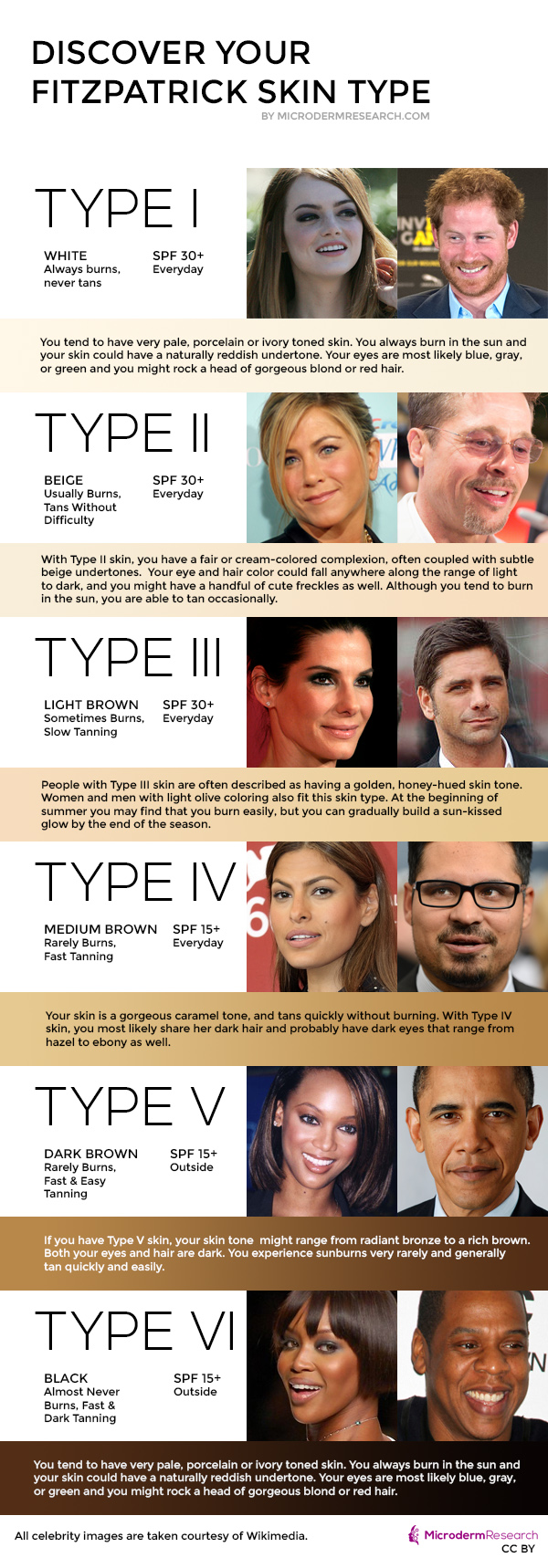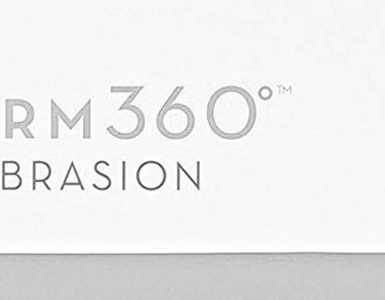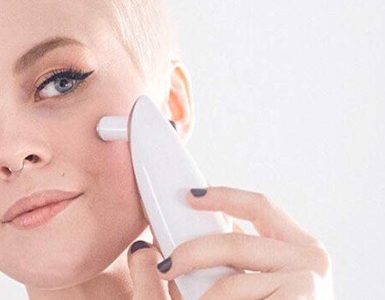Knowing your skin type can help you make informed decisions about everything from cosmetic products and procedures to understanding your risk for skin disease. Take a look at the chart below to see where your individual skin tone falls on the Fitzpatrick scale.

To place this infographic on your site, simply copy and paste this code on your page:
<p><a href="https://microdermresearch.com/advice/fitzpatrick-skin-types-test/"><img src="https://microdermresearch.com/wp-content/uploads/2019/12/fitzpatrick-skin-type-test-infographic.jpg" alt="fitzpatrick skin type test infographic" width="600px" border="0" /></a></p><p>Infographic made by <a href="https://microdermresearch.com/" target="_blank" rel="noopener noreferrer">MicrodermResearch</a>.</p>
About the Fitzpatrick Skin Type Scale
The Fitzpatrick skin type scale is one of the most common methods of classifying skin types, and ranges from Type I to Type VI. The scale was created by Dr Thomas B. Fitzpatrick in 1975, and has been widely used as a standard for dermatologists and skin care experts ever since.
Your own Fitzpatrick skin type is determined by both genetics and your skin’s reaction to sun exposure. Naturally fair-skinned people who sunburn quickly will have lower skin type numbers, while men and women with darker skin tones and a higher tolerance for sun exposure will be closer to the higher end. Discover your own Fitzpatrick skin type by completing the interactive test above.
The lower your Fitzpatrick skin type number, the more vigilant you should be in protecting your skin from the sun since you have a higher risk of sun damage like photoaging and possibly skin cancer. Cosmetics with built-in SPF protection, seeking the shade outside, or stylish hats and cover-ups are all great choices for women with skin types I-IV this summer.
Although somewhat less vulnerable to sun damage, women with skin types V-VI should also take steps to protect themselves, such as always applying sunscreen before hitting the beach and scheduling a yearly check-up with a dermatologist.
Fitzpatrick Skin Type snd Microdermabrasion
Fitzpatrick skin type determination may be used to guide the aggressiveness of aesthetic treatments and as a gross predictor of treatment response.
For example, patients with lighter skin types (I–III) can typically tolerate more aggressive microdermabrasion treatments and have low risks of pigmentary changes.
Patients with darker skin types (IV–VI) have greater risks of undesired pigmentary changes, such as hyperpigmentation, and require more conservative MDA treatments to reduce the likelihood of these complications.
Resources: Fitzpatrick, TB. “The Validity and Practicality of Sun-Reactive Skin Types I Through Vi.” Archives of Dermatology. 124.6 (1988): 869-71. Print.
Images: wikimedia.org






Add comment